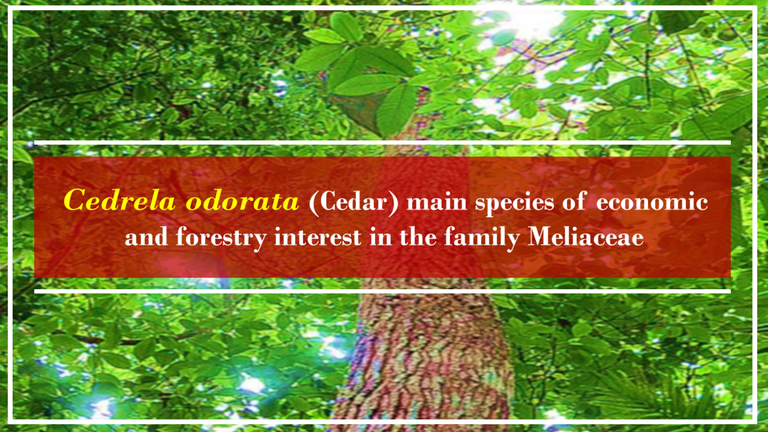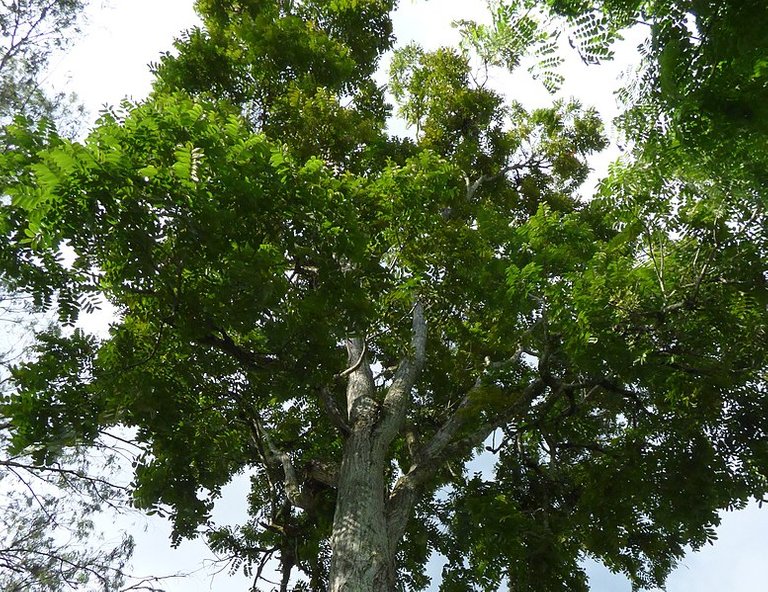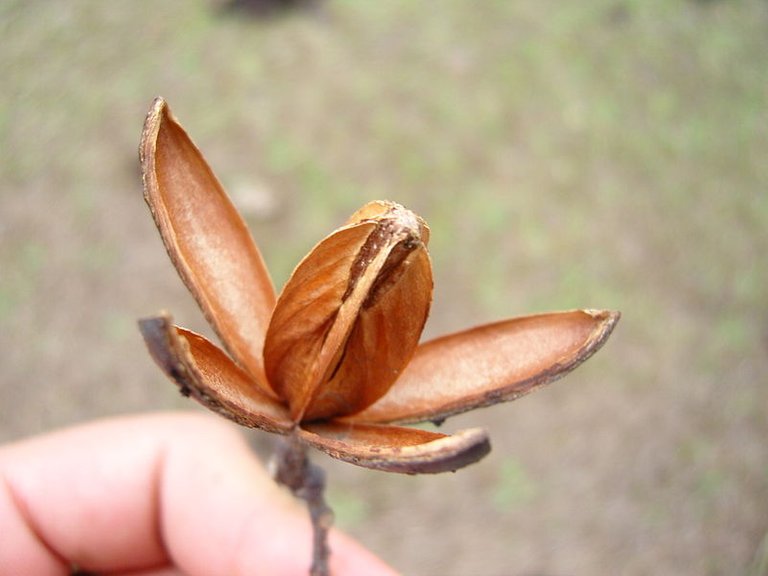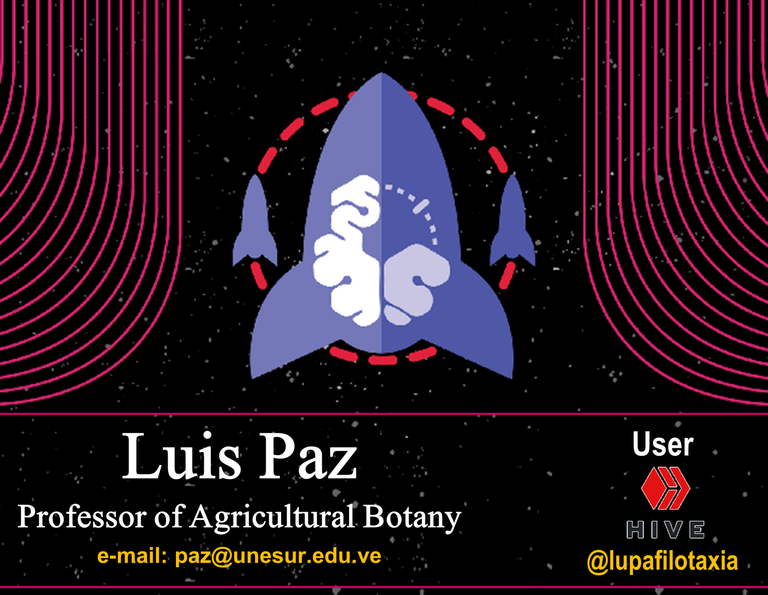Cedrela odorata (Cedar) main species of economic and forestry interest in the family Meliaceae

In this delivery, I will share with all the academic community of the HIVE platform, specifically with the members of the scientific reference community @STEMsocial, botanical content, related to morphometric dendrology, bark morphology, and forest exploitation of the species Cedrela odorata (Cedar).
Introduction
The species of forest interest Cedrela odorata, or Cedar as it is commonly known, represented in the XIX and XX centuries the main economic support in tropical countries dedicated to the commercial exploitation of fine wood and exportable quality, which reflected in a population decrease of specimens of C. odorata in natural environments, from there, it is considered as a species in protection in several countries of Central and South America [1].
The population decreases of specimens of Cedrela odorata, have not only generated concern in countries and environmental institutions, because of the loss of large forest areas of cedar, but simultaneously, it has awakened the interest of the forest sector to establish commercial plantations on a large scale, a favorable aspect that has allowed to take advantage of the wood of C. odorata, and at the same time mitigate the irrational exploitation, which had occurred for years in this important species of forest utility.
Therefore, the objective of this post is to socialize botanical elements related to morphometric dendrology, bark morphology, and forest exploitation of the species Cedar - Cedrela odorata.
General features
Taxonomy and distribution
Cedrela odorata, is a kind of woody biotype, artificially located in the Division: Magnoliophyta., Class: Magnoliopsida., Order: Sapindales., Family: Meliaceae, Gender: Cedrela and Species: odorata, biological plant material originating from Tropical America, with natural distribution area constituted essentially by highlands, jungles and flooded banks by rivers of America, Asia and Australia [2].
Common names
In tropical countries, the common name assigned to Cedrela odorata is very heterogeneous, being distinguished in most South American regions as cedar, or cedro paraíso in the case of Argentina, while in Central American countries it is known as cedro colorado, cedro oloroso or cedro rojo, characteristic name of the species in Mexico, in Suriname it is called Sedre, and in Panama it is called cedro cebolla.

Fig. 2. Branch systems and morphology of the cedar crown - Cedrela odorata. Public domain image. Author: Luigi Chiesa, 2016 / CC BY-SA 3.0
Vegetative and reproductive morphology
The specimens of Cedrela odorata, are deciduous trees with foliar laminae of composite type, of paripinnate morphology (two leaflets at the end of the rachis) and alternate phyllotaxy, pivoting main root and lateral roots of deep growth, erect stems little branched, panicle type flowers of variable aspect between elongated and narrow of tubular morphology and actinomorphic, the fruit is an infructescence constituted by woody dehiscent capsules of oblong aspect, winged seeds in the base, with thin endosperm adhered to the axis [3].

Fig. 3 Dehiscent fruit and in woody capsule of Cedar - Cedrela odorata. Public domain image, Author: Rojas, 2009 / CC BY-SA 4.0
Edaphoclimatology of Cedar
The Cedar, as it is commonly designated in Venezuela, is characterized for growing, developing and reproducing in tropical ecosystems predominantly coastal that present high solar intensity, with rainfall ranging between 2,500 and 4. 000 millimeters per year, average annual temperature between 22 and 27 °C, in relation to the edaphic requirements, the specimens of Cedrela odorata, show their maximum biological potential in deep, calcareous, clay and sandy soils coming from volcanic or limestone origin, which show extremely acidic pH [4].
Economic and forestry interest
One of the precious woods, distinguished and economically more profitable in the international markets, is the wood coming from adult stems of Cedrela odorata, mainly because, it presents/displays greater durability than the commercial wood of Mahogany (Swietenia macrophylla) and Teak (Tectona grandis), in addition the wood of Cedar is extremely light, of easy drying, it does not present transverse and longitudinal deformations, it shows resistance to the rot by fungi and termites attacks, in addition it conserves its reddish color later to its carving, on the other hand, it has excellent consistency and homogeneity during its manufacture or transformation to wood products destined to the construction, carpentry and cabinetmaking, namely; veneers, turned articles, cabinets, doors, plywood, among others [5].
Morphometric STEM dendrology
Morphometry of the Cedar Stems
The stems of Cedrela odorata, can reach on average 45 meters high, diameters around 1.7 meters, show straight, robust trunks with small buttresses at base level, ascending branching, arched and thick, Morphometrically, Cedar wood exhibits a coarse, heterogeneous texture and shows a gradual change in color between sapwood (light yellow to grayish brown) and heartwood (grayish to reddish brown), with essentially linear grain, with overlapping arches on the tangential face [5].
Morphology of the cortex
The morphology of the bark, that exhibits the stems of Cedrela odorata is fundamentally fissured, of grayish brown or reddish color, fibrous and with abundant lenticels in longitudinal disposition.

Fig. 4 Cedar bark - Cedrela odorata. Public domain image, Author: Dick Culber, 2014 / CC BY-SA 2.0
Forest harvesting
Morphological potential of wood
According to the data reported by FAO, the specimens of Cedrela odorata under adequate silvicultural practices can be managed in harvesting times of 20 to 25 years, with annual increases in optimal conditions of 15 cubic meters/ha/year, regarding the most favorable morphological variables for wood harvesting, are: prolonged conservation, pleasant aroma, light dry biomass of aesthetic quality, durable and easy craft and industrial work.
SCIENTIFIC CONTRIBUTIONS OF THIS PUBLICATION
- This delivery of forest character, admits to contribute in the socialization of content of botanical cut related to the taxonomy and distribution of the arboreal species Cedrela odorata on having presented descriptive content on his vegetative and reproductive morphology, edafo-climatic factors, economic and forest interest, in the search to stimulate the establishment of programs of reforestation of artificial plantations, tending to preserve this important vegetable resource.
BIBLIOGRAPHICAL REFERENCES CONSULTED AND CITED:
[1] Santos A. Evaluación química de subproductos de Cedrela odorata L. (Cedro rojo) y propuesta de gestión para su aprovechamiento. CIIDIR – México. 2014: 97. Article: Online access
[2] Varela C., and Souki M. Phenetic relationships and taxonomic keys for species of Cedrela (Meliaceae) in Venezuela. Caldasia. 2012; 35; 2: 281 - 292. Article: Online access
[3] Croat T. Flora de la Isla de Barro Colorado. 1978. Article: Online access
[4] Ramírez C., Vera G., Carrillo F. y Magaña O. El cedro rojo (Cedrela odorata L.) como alternativa de reconversión en terrenos abandonados por la agricultura comercial en el Sur de Tamaulipas. Agricultura Técnica en México. 2008; 34; 2: 243 - 256. Article: Online access
[5] Amáez E. Características de la madera de Cedrela odorata L. (cedro amargo, Meliaceae) en Costa Rica. Rev. Biol. Trop. 1988; 36; 1: 67 - 73. Article: Online access
ATTENTION
Readers and followers
If you wish to read more scientific articles in English or Spanish, of excellent academic quality, do not hesitate to visit #STEMSocial and #STEM-espanol, communities that promote scientific content mainly in the areas of Science, Technology, Engineering and Mathematics.
OBSERVATION

0
0
0.000
#Posh Twitter:
https://twitter.com/lupafilotaxia/status/1299545712972247041
Excelente entrega de un árbol muy conocido y querido en Venezuela como es el cedro y es un poco triste que no hay muchos en la ciudad donde vivo sobre todo por el frío que supongo no los deja crecer como es debido.
Gracias por compartir este artículo.
Saludos @memes777, el rango de temperatura media que requiere Cedrela odorata es desde 22 a los 27 °C, temperaturas por debajo de los 22°C el Cedro presenta problemas de desarrollo a nivel del tallo, elemento no favorable para la actividad forestal. Vives en Mérida.?
Si, entiendo porque en esta zona es tan difícil ver población de cedros y es una lastima porque son lo mejor en un parque para ir a hacer ejercicio jajaja.
Cierto, te comento que en Barinas es el árbol emblemático del estado y existen grandes extensiones boscosas de Cedro. Aquí en dónde vivo Santa Bárbara de Zulia, tenemos plantaciones comerciales de Cedro, sin embargo, no hay parques de Cedro por áca.
Not sure I've ever come across this plant around here, be it physically or in literature. The distribution is not wide. Thanks for educating us once again.
Greetings friend @gentleshaid, in some countries of South America it is very appreciated by the quality of its wood, in the case of Venezuela it has more commercial value by its reddish tonality, even has greater acceptance than the wood of Swietenia macrophylla. Thanks for your visit, we continue reading.
Thanks for your contribution to the STEMsocial community. Feel free to join us on discord to get to know the rest of us!
Please consider supporting our funding proposal, approving our witness (@stem.witness) or delegating to the @stemsocial account (for some ROI).
Thanks for using the STEMsocial app and including @stemsocial as a beneficiary, which give you stronger support.
Thank you for your support.
Greetings esteemed professor @lupafilotaxia excellent description makes on the Cedar, forest species very coveted in the tropical zones, according to the edafoclimatic characteristics that mention is a tree clearly adapted to tropical zones, some producers plant it like long term investment.
See you later, have a good week !
Greetings dear professor @amestyj, correct this plant material is very appreciated in tropical countries, especially in South America there are commercial plantations. Thank you for leaving your appreciation, we continue reading.